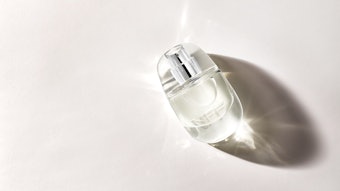New Mintel research suggests there is a growing demand for more distinct, non-traditional uses on the fragrance front. To that end, more than six out of 10 women (64%) and more than half of men (51%) who use any scented item would be interested in fragrances that can be worn at night to help one sleep or refresh sheets.
“A search of popular fragrance blogs also reveals that it’s not an uncommon practice for people to spray themselves or their bed linens with fragrance prior to going to bed," said Shannon Romanowski, beauty and personal care analyst at Mintel.
There could be a variety of reasons that people spritz themselves with fragrance before bedtime, but helping to decompress before sleeping is definitely a key objective. Mintel said. As consumers may be seeking more natural alternatives to sleeping pills or medication, fragrances that are designed to help aid with sleep could be an opportunity for the category.
“Air care brand Febreze recently launched a new subline called Sleep Serenity that includes a variety of formats and scents designed to help people relax and get a better night’s sleep," said Romanowski. "The Febreze Sleep Serenity web page also has a tab for a bedtime plan that is endorsed by the National Sleep Foundation.”
Mintel found 60% of consumers would like to try a scent that could help relieve colds and headaches, 52% of men aged 18-34 are interested in mobile apps to help them choose a fragrance, 48% report interest in fragrances that offer a cooling or heating sensation, 35% of respondents are interested in fragrances specifically made for hair, but that number jumps to 90% among the target group (those who buy scented powder or lotion, make spur of the moment purchases, splurge on themselves and agree that private labels work as well as branded ones).
“New forms and benefits attract interest from consumers, primarily driven by women and younger consumers, which stands to reason as these groups tend to be more engaged in the category overall," said Romanowski. "However, since fine fragrances in particular tend to be viewed as occasional use items, added benefits could help to increase usage. Future growth will likely come from users ‘trading up’ to more expensive variants, ancillary items, and innovative new product formats and benefits."










